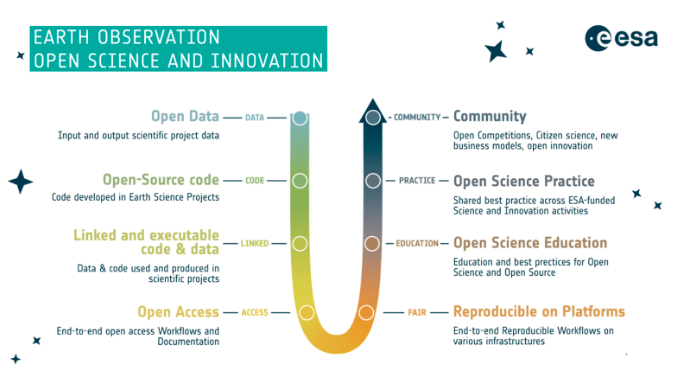Appearance
ESA Open Science
Modern Earth system science faces complex challenges that demand collaborative, transparent, and reproducible approaches. At the heart of this transformation is the convergence of FAIR principles (Findability, Accessibility, Interoperability, and Reusability), Open Science, and Open Innovation—all of which create unprecedented opportunities for scalable, cross-sector research and decision-making.
What is Open Science? Open Science is just science done right.
Open Science is a movement to make the entire research process more accessible and reproducible, including input data, analysis methods, results, and the dissemination and reception of those results.
The Open Science and Innovation Vision outlined in ESA’s Earth Observation Science Strategy (2024) defines eight foundational pillars.

ESA’s vision for EO Open Science and Innovation provides a structured framework to embed FAIR and Open Science practices across its Earth Observation activities.
EarthCODE (earthcode.esa.int) is part of this larger panorama of strategic initiatives. Through its ecosystem of tools and platforms, it aims to transform FAIR and Open principles from an aspiration to routine practice for Earth Science activities funded through its programme and beyond.